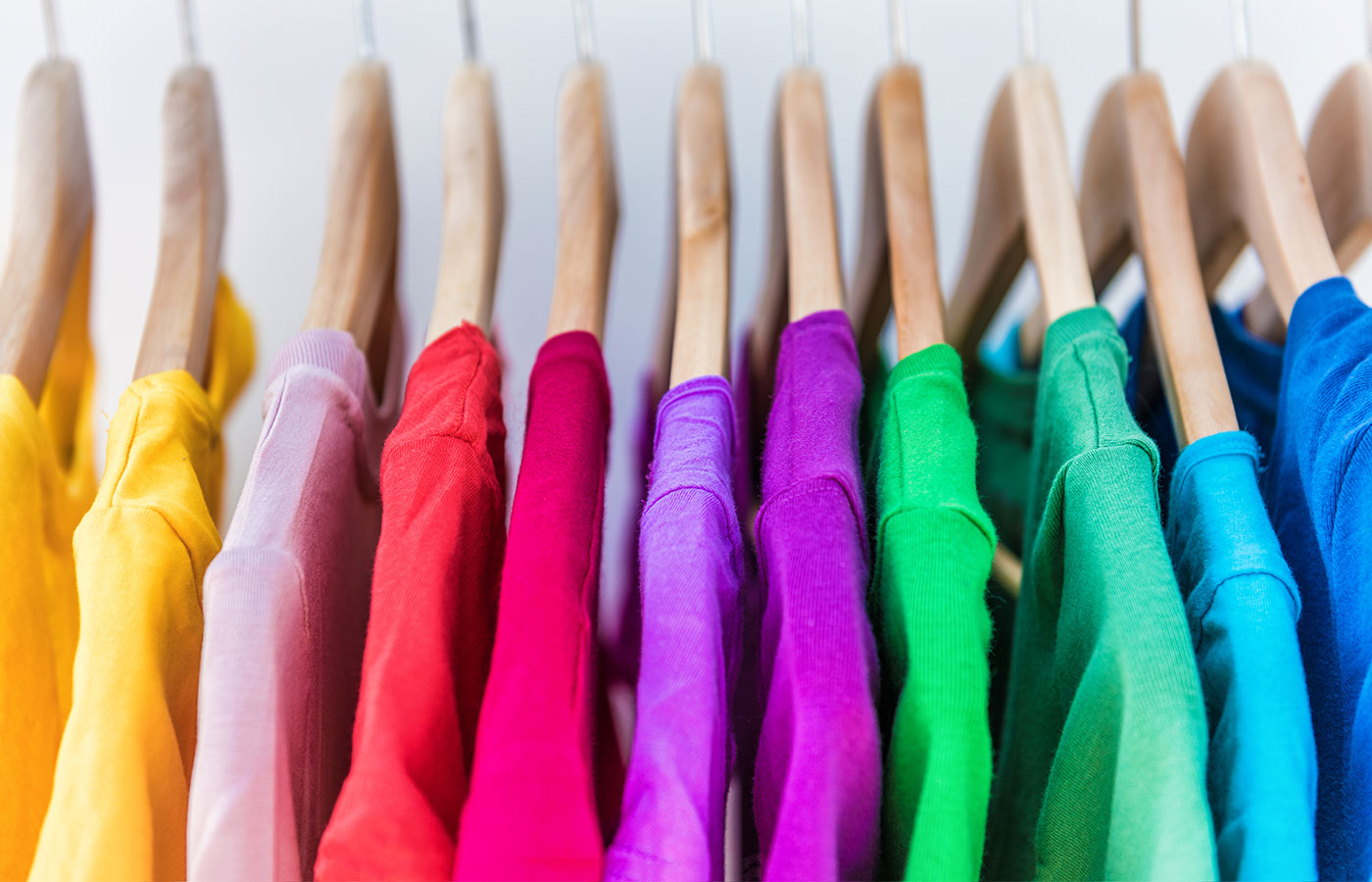Branded Clothing for Cold Climates: Which Fabrics Actually Work?
Branded Clothing for Cold Climates: Which Fabrics Actually Work?
Blog Article
Comprehending Apparel: The Relevance of Material Choices in Your Closet
The choice of material in apparel plays an essential duty in both visual appeals and functionality. Different materials supply varying levels of breathability, sturdiness, and comfort, directly affecting the user's experience. Comprehending these subtleties can boost one's closet noticeably. Yet, many overlook just how these choices can influence not simply individual style, yet likewise sustainability. What material choices could redefine your wardrobe and straighten it with both design and obligation?
The Duty of Fabric in vogue and Functionality

Usual Material Types and Their Qualities
When selecting clothes, understanding the characteristics of usual material kinds is crucial for making informed selections. Cotton, a widely-used natural fiber, is recognized for its breathability, flexibility, and soft qualities, making it appropriate for casual wear and day-to-day garments. Bed linen, one more natural alternative, boasts superb moisture-wicking properties and a distinct appearance, suitable for cozy climates.Wool, often preferred for its heat and toughness, differs in fineness; merino wool is soft against the skin, while coarser kinds are used for outerwear. Synthetic textiles like polyester and nylon supply durability and resistance to wrinkles, making them popular for activewear and traveling garments. Finally, blends, which integrate all-natural and artificial fibers, can enhance functionality while keeping comfort. By recognizing these fabric attributes, individuals can select clothes that lines up with their way of life and aesthetic preferences.
Breathability and Comfort: Picking the Right Fabrics for Various Environments
Picking the best materials for numerous climates can significantly improve comfort and general wearability. Breathable products are important in warm environments, as they permit air blood circulation and wetness evaporation. Fabrics such as cotton, linen, and moisture-wicking synthetics efficiently draw sweat away from the body, keeping the user cool and completely dry. Alternatively, in cooler environments, thicker fabrics like wool or fleece offer insulation while maintaining breathability, making sure warmth without overheating.Additionally, the option of material weight plays an essential duty; lightweight textiles are more effective for summertime, whereas heavier alternatives are matched for winter wear. Comprehending the special residential or commercial properties of each textile makes it possible for people to clothe suitably for differing climate condition. Ultimately, picking breathable and comfortable fabrics tailored to particular climates can significantly boost day-to-day comfort and enhance the overall experience of using garments.
Longevity and Treatment: Just How Textile Affects Longevity of Your Wardrobe
Picking the right products can greatly impact the durability and care requirements of a closet. Fabrics such as cotton and polyester are understood for their durability and ease of upkeep, making them perfect for daily wear. On the other hand, delicate products like silk and shoelace call for even more cautious handling and specialized cleansing methods, which can boost the time and initiative required for care. Branded Clothing.Durability is additionally affected by the material's weave and coating; securely woven textiles tend to resist damage far better than freely woven choices. Furthermore, synthetic blends usually offer enhanced toughness, integrating the very best top qualities of numerous fibers.Understanding the treatment instructions for each and every fabric is crucial, as incorrect cleaning or drying out can result in premature wear. Eventually, selecting sturdy products can cause a longer-lasting closet, decreasing the frequency of substitutes and adding to a more lasting fashion selection
The Impact of Material on Fit and Shape

Sustainable Textile Choices: Making Eco-Friendly Decisions
The impact of material extends beyond fit and shape to incorporate ecological variables, motivating a growing rate of interest in lasting material options. Environment-friendly materials, such as organic cotton, hemp, and Tencel, are getting traction among consumers who focus on sustainability in their wardrobes. These materials are often created with fewer chemicals and water, reducing their eco-friendly footprint.Additionally, recycled textiles, made from post-consumer waste, offer an innovative service to the textile industry's air pollution trouble. Brands progressively welcome openness in their sourcing approaches, allowing customers to make enlightened choices about their purchases.Choosing lasting textiles not just supports honest techniques however additionally motivates the garment industry to embrace more liable manufacturing methods. As awareness of ecological issues increases, individuals are advised to mirror on the long-lasting effect of their fabric selections, promoting an activity towards an extra lasting and ecologically mindful method to fashion.
Boosting Style: Just How Material Can Transform an Attire
While several may concentrate on shade and cut when picking an outfit, the option of fabric plays an important function in elevating design and improving overall look. Different materials share distinctive state of minds and messages; as an example, silk radiates deluxe and sophistication, while denim supplies a casual, unwinded vibe. The structure and drape of a material can dramatically modify the shape, with organized materials offering a polished look and softer ones creating an extra fluid, loosened up aesthetic.Moreover, the weight of the material influences wearability across seasons. Lightweight textiles like bed linen and cotton are suitable for summer season, while larger products such as woollen and velour offer heat and beauty in chillier months. Recognizing material residential pop over to this site properties, such as breathability and stretch, also empowers individuals to make informed choices that boost convenience without endangering design. Eventually, the ideal textile can transform an attire from regular to remarkable, making it an important consideration in any closet.
Frequently Asked Concerns
Exactly how Do I Determine the Material Material of My Clothes?
To recognize material material, one can check out treatment tags, conduct burn tests for fiber identification, or consult textile examples. These approaches aid set apart products, making sure notified choices for apparel treatment and maintenance in day-to-day wear.
Can Textile Option Affect My Mood or Self-confidence?
Material choice can significantly influence an individual's state of mind and confidence. Branded Clothing. Certain products may stimulate feelings of convenience or beauty, while others can feel limiting or unflattering, eventually influencing self-perception and emotional health throughout the day
What Fabrics Are Best for Sensitive Skin?
For people with sensitive skin, all-natural materials like bamboo, cotton, and bed linen are typically recommended. These products are breathable, hypoallergenic, and less most likely to cause irritability, making them appropriate selections for comfort and skin health and wellness.
How Do I Properly Wash and Look After Various Fabrics?
To correctly wash and care for different materials, one must take into consideration each product's particular needs, including temperature level settings, cleaning agents, and drying techniques, making certain longevity and preserving the textile's initial high qualities for perfect usage.
Exist Details Fabrics for Athletic or Performance Wear?
Sports or performance wear commonly utilizes materials such as polyester, nylon, and spandex. These materials are designed for moisture-wicking, breathability, and adaptability, enhancing motion and convenience throughout physical tasks while supplying longevity and assistance. On the other hand, in cooler environments, thicker textiles like wool or fleece give insulation while maintaining breathability, guaranteeing heat without overheating.Additionally, the option of material weight plays a vital find out here duty; light-weight materials are preferable for summer season, whereas heavier options are matched for winter wear. In comparison, fragile products like silk and shoelace call for more mindful handling and specialized cleaning techniques, which can raise the time and initiative required for care.Durability is likewise influenced by the textile's weave and coating; snugly woven textiles often tend to stand up to wear and tear far better than freely woven options. In contrast, rigid textiles can limit activity yet give a traditional, refined look.Moreover, the density and structure of the fabric can influence the aesthetic understanding of body shape. The influence of material prolongs beyond fit and shape to encompass ecological aspects, triggering a growing rate of interest in lasting textile choices. The texture and drape of a fabric can significantly modify the silhouette, with structured textiles supplying a sleek look and softer ones producing an extra fluid, kicked back aesthetic.Moreover, the weight of the textile influences wearability across periods.
Report this page